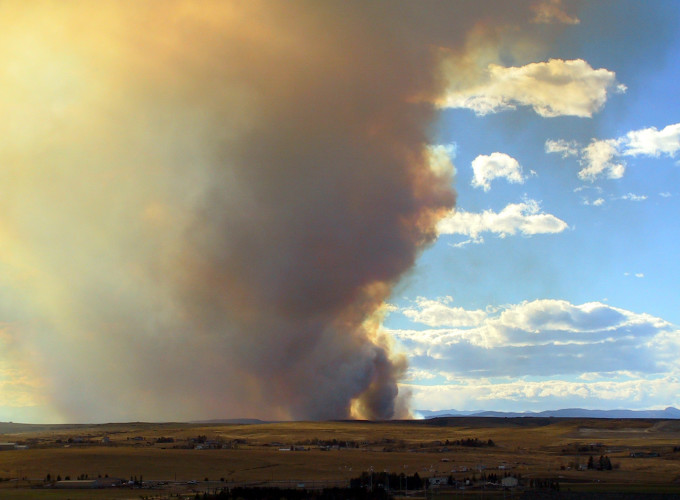
Preparing For Wildfire Season
How To Protect Your Tenants From Smokey Environments
Interview with Jorge Guerrero, CAC, CDPH, Southern California Division Manager
Jorge is responsible for large client accounts in the Los Angeles office. He has extensive experience managing numerous asbestos, lead, indoor air quality and mold remediation projects.
How do wildfires affect the Indoor Air Quality of my building?
Wildfire smoke is primarily made up of carbon dioxide, water vapor, carbon monoxide, hydrocarbons and particulate matter. Particulate matter is typically the major pollutant of concern from wildfire smoke, as the particulate from smoke tends to be very small. This fine matter are respiratory irritants and in high concentrations can cause persistent coughing, production of phlegm wheezing and physical discomfort in breathing. Persons with compromised respiratory, cardiovascular and immune systems tend to be more seriously affected, triggering asthma, bronchitis, and reduced lung functions.
Secondary concerns are volatile organic compounds (VOC) that are present in the smoke from byproducts of combustion. These compounds, most commonly, acrolein and benzene, are also irritants, which can produce respiratory symptoms as well as other symptoms, such as, stinging or tearing eyes and nausea.
What steps should you take to prevent the outdoor smoke from getting inside?
The immediate response to wildfire smoke and impacts to indoor air quality for buildings and occupants is to minimize the amount of outside air (thus particulate and other compounds of concern) from entering the building, which is done primarily through controlling HVAC systems.
Follow these key steps:
Close fresh air intake and seal with tape and plastic sheeting, until fire situation has stabilized.
Replace all HVAC filters. Install charcoal filters or use charcoal pre-filters, when available.
Install sticky walk-off mats at all egress locations and change them frequently to help control tracking dust from outside.
Who is most vulnerable in smoky conditions?
Not everyone who is exposed to wildfire smoke will have health problems. Extent and duration of expsure, age, individual susceptibility and other factors play a significant role in determining whether or not someone will experience smoke-related health problems. However, as indicated in the answer to question #1, persons with compromised respiratory, cardiovascular and immune systems tend to be more seriously affected, triggering asthma, bronchitis and reduced lung functions.
What precautions should be taken/ guidelines should be followed to protect yourself as well as these high-risk individuals?
When air quality warnings are issued by government agencies, the EPA recommends staying indoors and filtering air through an air conditioner, or leaving the area until the fire is suppressed or the winds have shifted. The EPA also recommends wearing a respirator rated for fine particles, but this would require prior medical approval and proper fit testing and training.
Can you give an example of a job that you handled related to this issue? What lessons learned would you pass on?
In 2009, the Los Angeles area was struck by major wildfires that impacted seven properties belonging to one of our clients. At the time, we immediately mobilized to the impacted properties to perform visual inspections for site conditions, which included inspecting the interior and exterior of the buildings for the presence of ash; inspecting the HVAC system (along with the HVAC contractors, to ensure the units were sealed up properly and filters were replaced); and sampling the indoor air for the presence of carbon monoxide, carbon dioxide, VOCs, and particulate matter.
We generated a detailed initial response document for our client, which included specific instructions of activities to follow in order to protect the buildings, prior to and following a wildfire. To the point that the property/ site managers no longer need for us to perform site visits. The property managers simply follow the instruction in the document to ensure their sites remain safe.
For more information on wildfire safety visit:
http://www.epa.gov/naturalevents/wildfires/index.html


